Low-hanging fruit SEO opportunities can help you:
- Get your content indexed by Google ASAP
- Achieve maximum results with minimum effort
- Show clients fast progress to prevent churn
- Get buy-in for more SEO resources
Here are 12 SEO quick wins you can implement today.
It’s always easier to move something that’s already in motion.
Shifting something from position 4 to 1 will bring in more traffic and have a more significant impact than going from position 100 to 15.
That’s why low-hanging fruit keywords are the ones you’re already ranking for in positions 4-15 and that you can improve reasonably easily.
You can access a pre-filtered list showing your site’s low-hanging fruit keywords in the Opportunities report:

Get even more quick wins with high-volume, low-competition keywords
If you have a long list of low-hanging fruit keywords, knowing where to start optimizing can be hard.
Try adding these additional filters to uncover high-search volume, low-competition keywords:
- High search volume: Set a minimum monthly search volume. I like to start with 100.
- Low competition: Set a maximum keyword difficulty value. I like to start with 10.
You can adjust these filters according to your data set until you have a more manageable list of keywords.
For example, NerdWallet has almost 900,000 low-hanging fruit keywords.
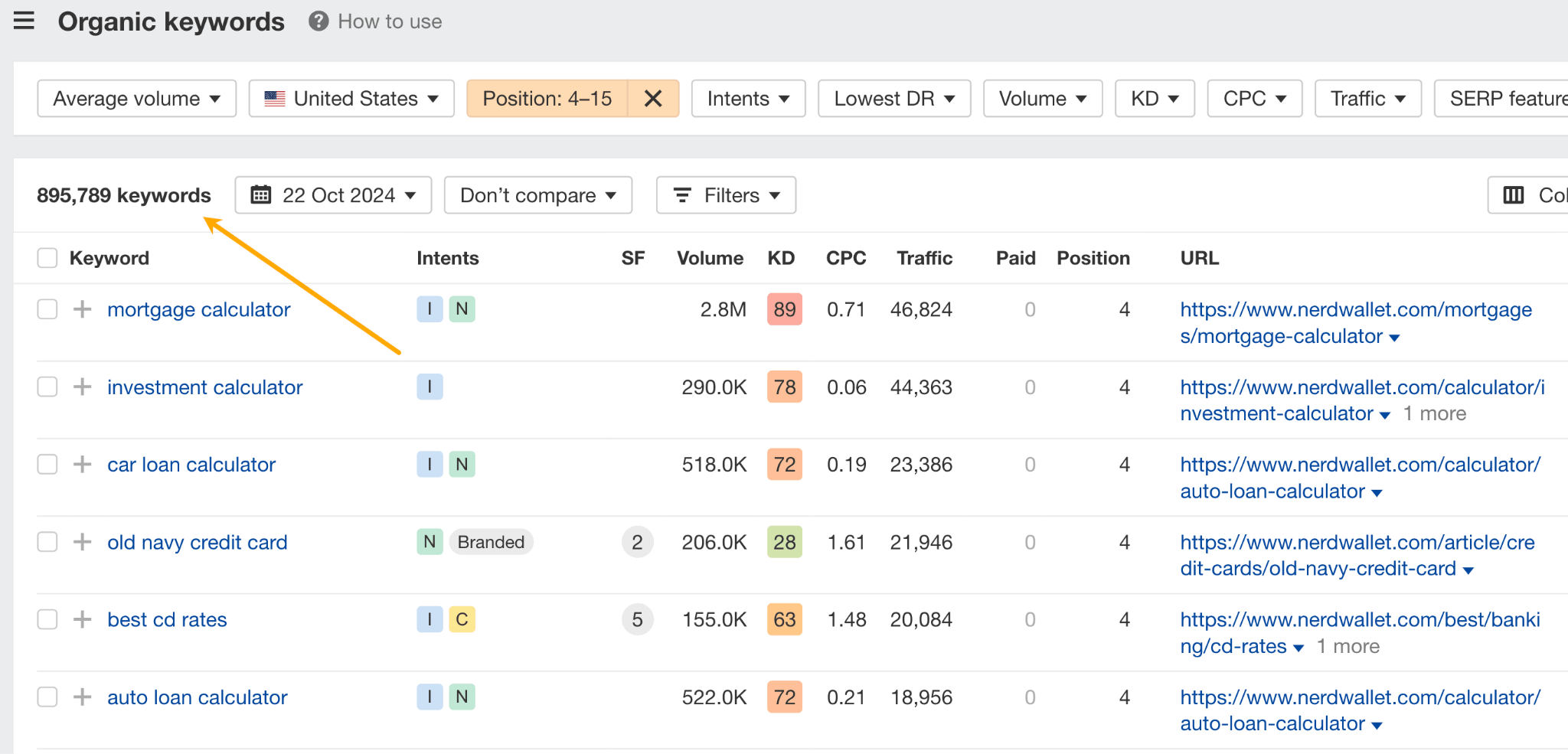
By adjusting the search volume and keyword difficulty filters, we can reduce the list to under 27,000 to find the ones that can lead to some quick traffic wins:
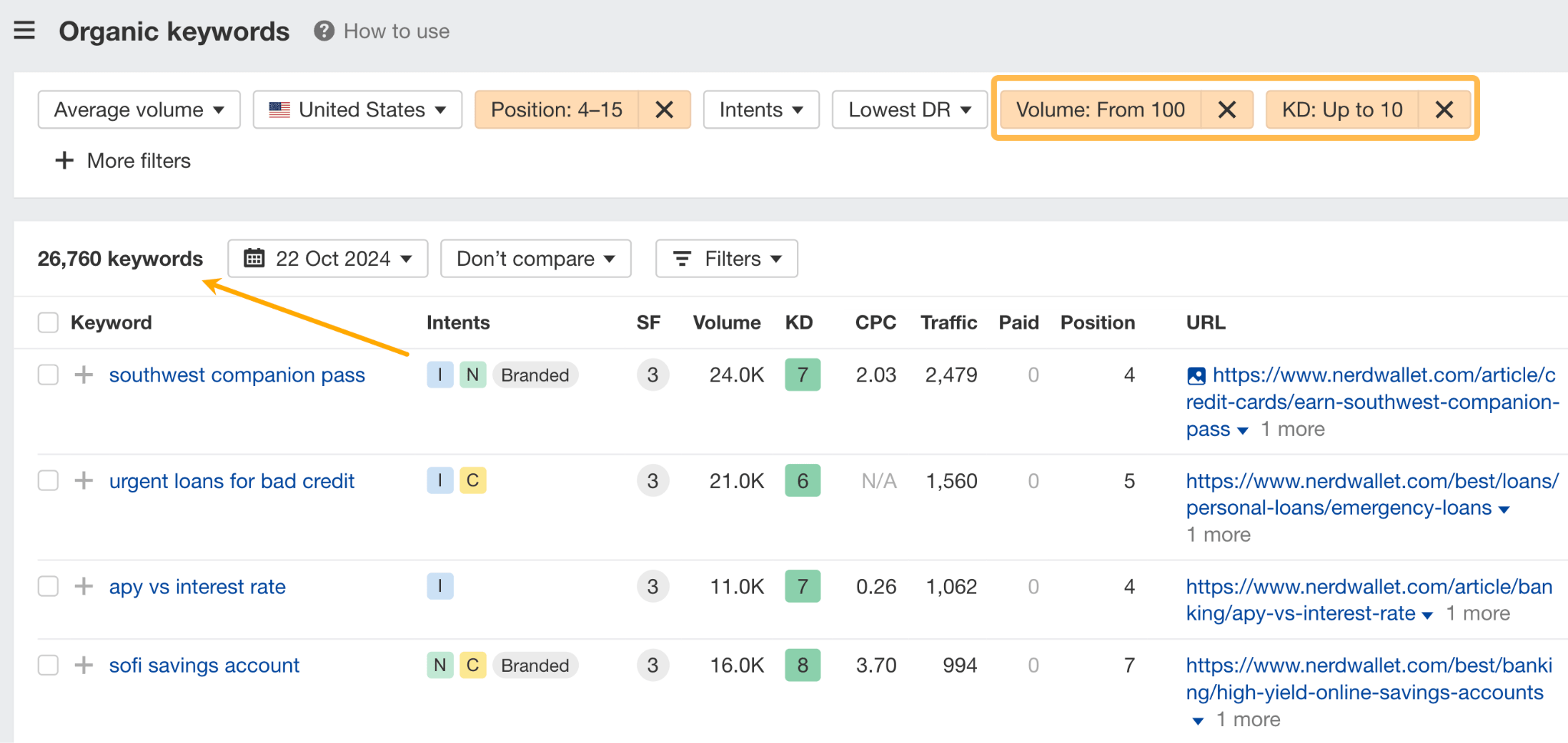
If this list of keywords is still too large for you, try increasing the volume filter to a value over 100 and/or decreasing the difficulty filter to a value lower than 10.
If your site already ranks on the first page of Google results, an easy way to get more traffic is to snag featured snippet mentions.
Featured snippets appear at the top of many informational queries and share a direct answer to the query, like so:
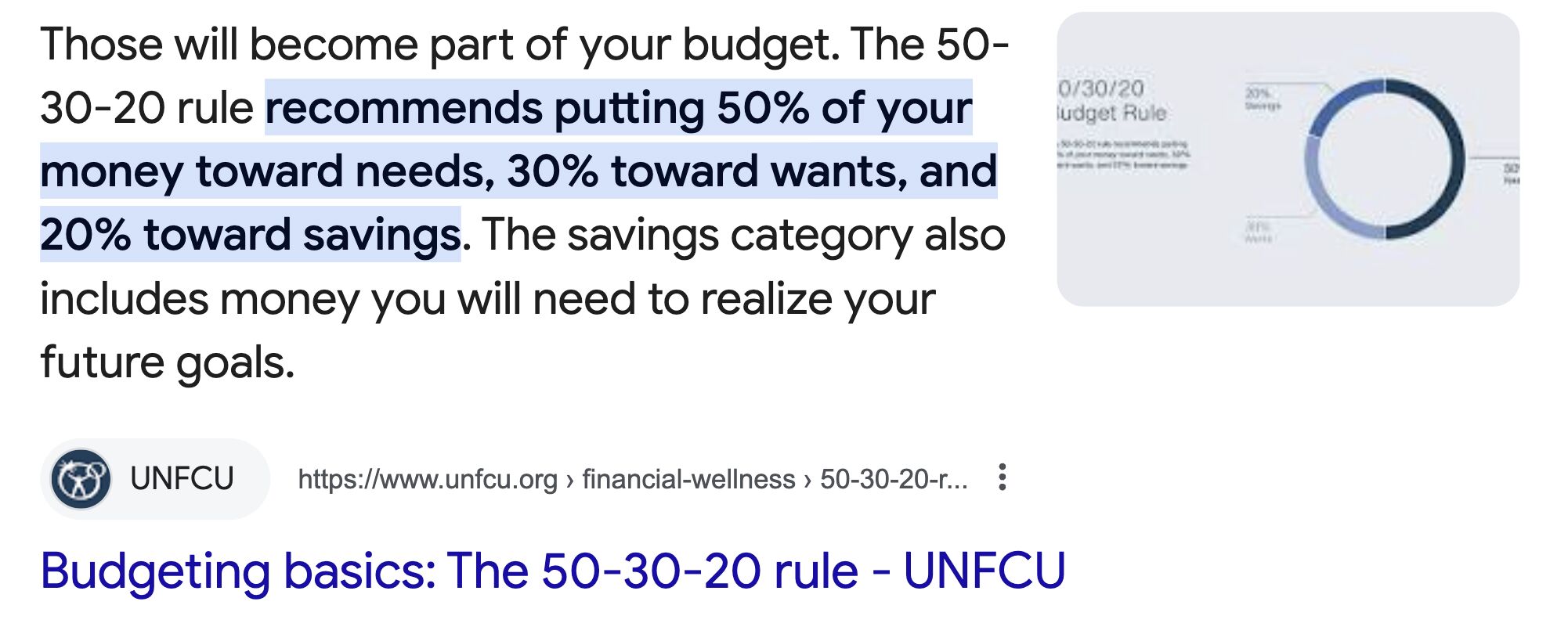
Ranking in featured snippets will improve both your share of voice and traffic to your website.
Using the Opportunities report, you can access a pre-filtered report of keywords where:
- You rank in positions 2 to 8
- There is a featured snippet in the SERP
- You don’t already show up in the featured snippet
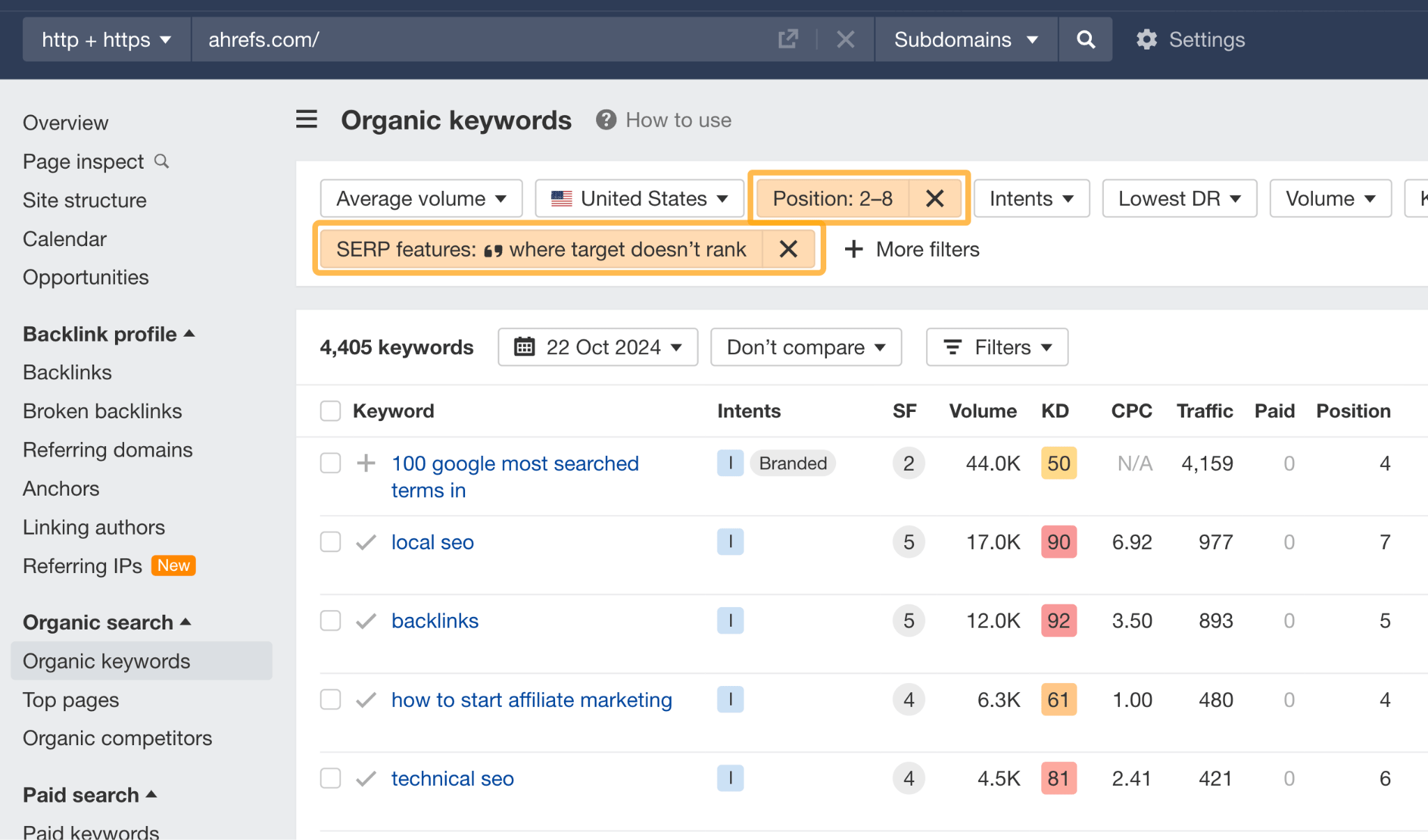
You can use this list of keywords to improve your topic coverage and optimization with snippet-friendly content in each post.
The easiest thing to try for SEO quick wins is adding a new section in your content that directly addresses each keyword and its intent. Immediately underneath the section’s heading:
- Answer the question directly
- Fulfill the searcher’s intent
- Remove excess or filler content
For example, let’s look at the keyword “50 30 20 rule”. Currently, Investopedia is ranking in the featured snippet with the following text:
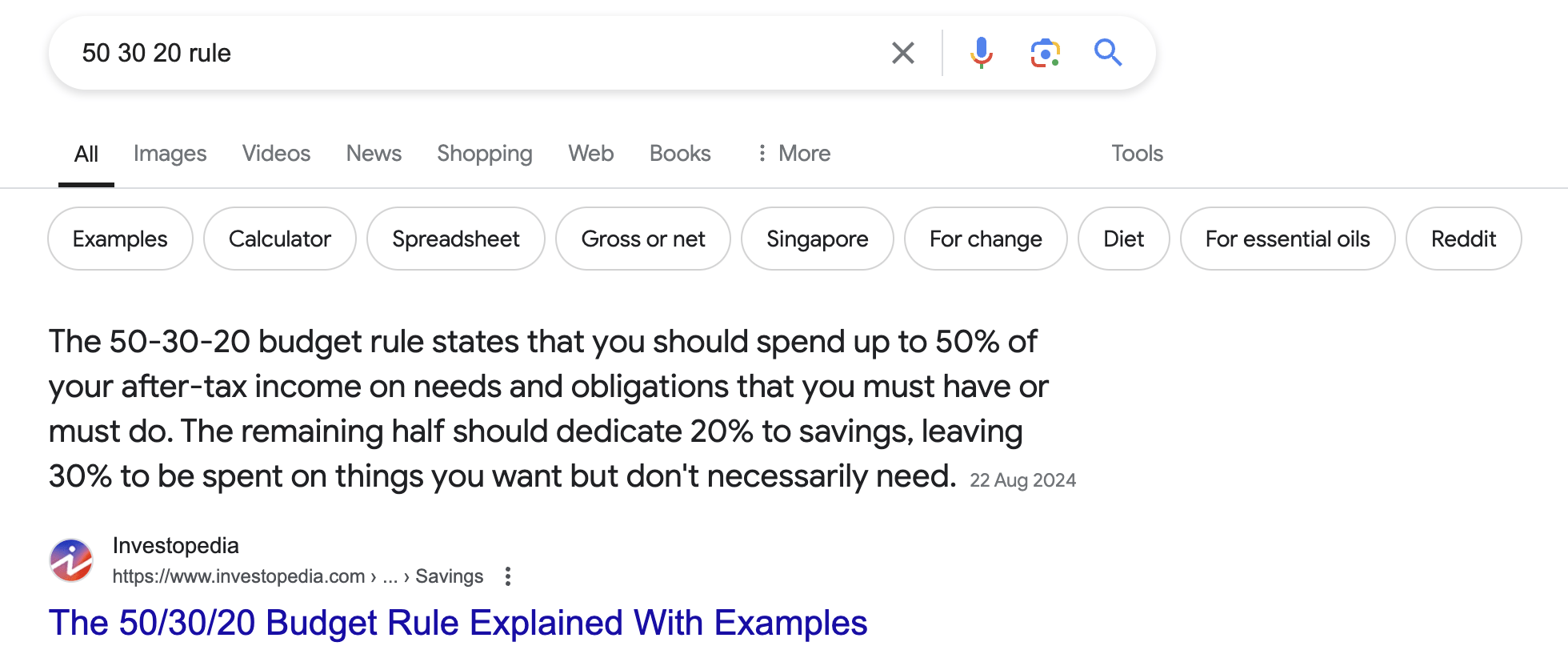
It is a direct yet succinct paragraph fulfilling the searcher’s intent of understanding what the rule is about and how to apply it.
Compare that to NerdWallet’s content, which is ranking in position 3 for the same keyword:

It has a similar amount of content. And, on the surface seems to address the question directly since it begins with “The 50/30/20 rule is…”.
However, it doesn’t quite meet search intent because it doesn’t give enough detail for someone to understand the rule enough to apply it. For instance, it mentions there are three main categories that apply to the rule but does not list them.
A simple tweak to directly answer a question or better fulfill searcher intent is often all that’s needed to help rank in more featured snippets.
SEO can often be likened to a race between you and your competitors.
Competitors who have been doing it longer are often much further ahead than you and it can be difficult to know where to direct your efforts to catch up.
A great place to start for some quick SEO results is by looking for keywords where your competitors rank in the top 10 positions, but you’re not showing up at all.
These keywords indicate traffic potential for your industry. If they deliver traffic to your competitors, chances are high that closing these content gaps will also boost your traffic.
By clicking on this opportunity in the Opportunities report, you’ll get a pre-filtered report that has:
- Automatically loaded your top 10 competitors
- Filtered out keywords where you already rank
- Filtered keywords to only show the ones where competitors rank in the top 10

You’ll also be able to see which competitors you have the biggest gaps with. For example, NerdWallet has the biggest gaps with Bankrate and Chase:

Not all gaps need to be closed. There are many times when competitors will cover topics that do not relate to your business at all. In such cases, skip the topic and move to the next one.
For a complete process you can follow, check out my post How to Do a Content Gap Analysis [With Template].
Reclaiming lost traffic is one of my favorite low-hanging fruit SEO tactics. Preventing content decay is a crucial part of growing a website.
From the Opportunities report, you can access a pre-filtered report in Top Pages that displays all pages with declining traffic in the last 6 months.

For these pages, you can do a page-level analysis to assess and fix things like:
- Poor keyword optimization
- Shallow topical coverage
- Intent misalignment
You don’t need to completely rewrite content in order to get performance gains. For example, one of my past clients was steadily losing traffic on many of their top-performing blog posts.
Within three weeks after my team made some strategic content updates, we saw:
- 184% boost in organic traffic
- 460% boost in keyword breadth
- 1220% boost in conversions
Here’s an example of one of the posts we updated.
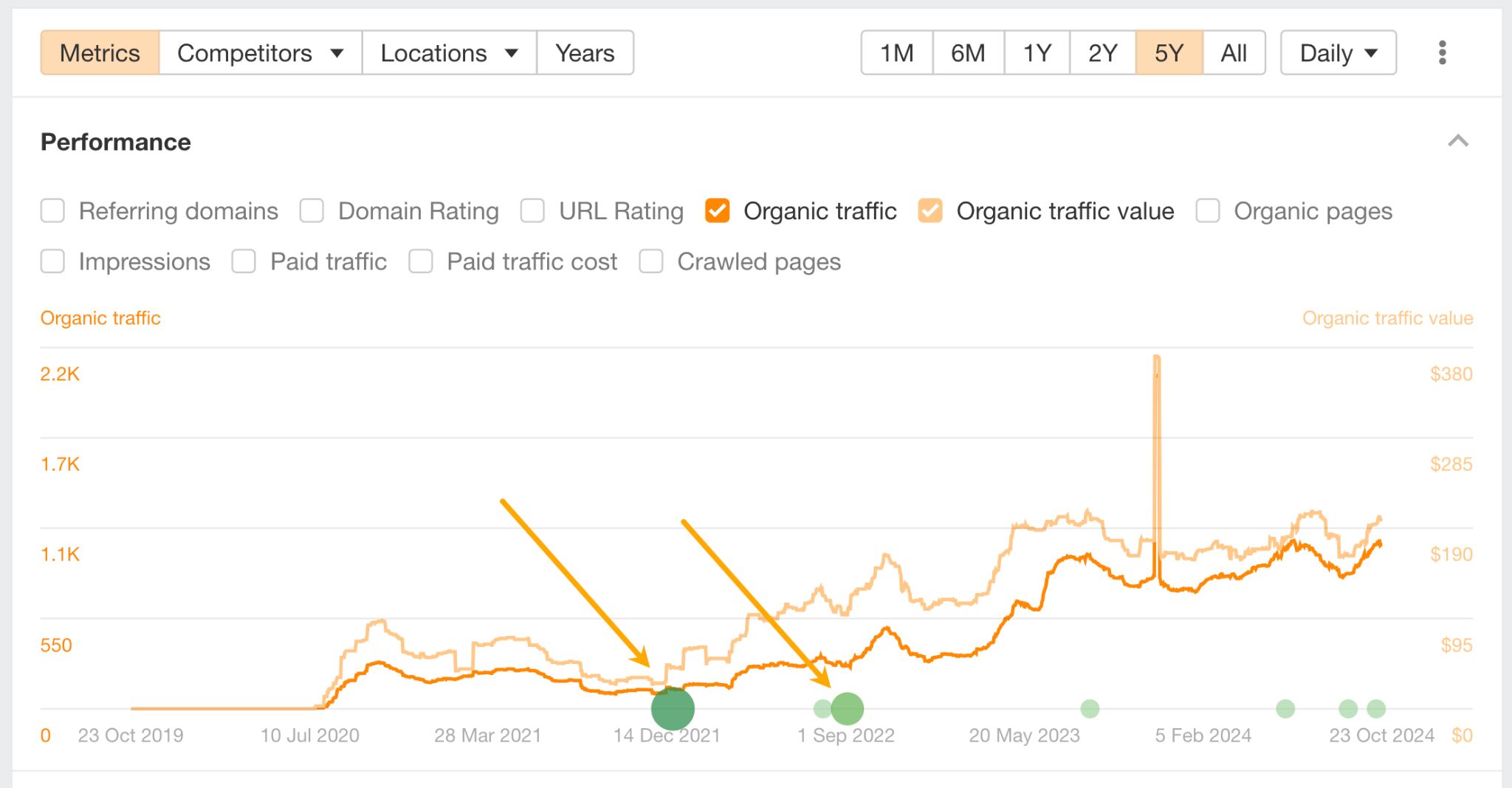
You can see how two updates lead to unprecedented growth that has been sustained for years afterwards. We more than doubled this post’s traffic compared to its peak prior to the first update.
Neither update was a total rewrite.
Rather, I tasked my team to insert some new sections and reword a couple of existing sections so we could better target a broader variety of related keywords.
While content updates are a great quick win for pages that ranked well and started declining, it’s not an effective action for pages that have always had consistently low traffic.
At Ahrefs, we often publish the MVP version of content to see if it takes. It’s how we balance our content’s quality standards with maintaining a consistent publishing schedule.
The reality is that not all of these pieces perform as we hoped.
In these cases, we rewrite the pages that didn’t work out. The Opportunities report provides an easy way to find pages you could consider rewriting quickly. It takes you to a pre-filtered version of Content Explorer:
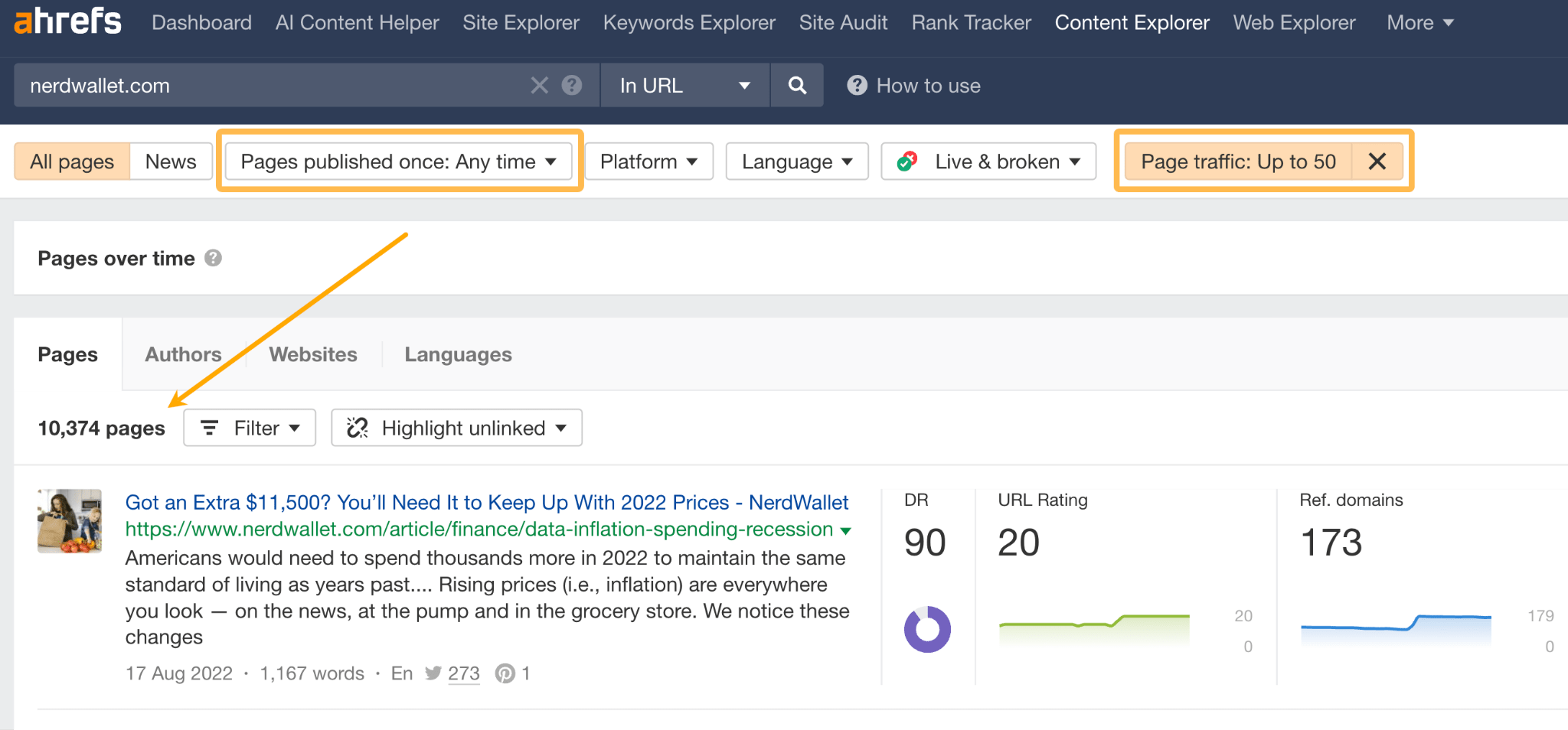
This report shows pages that have fewer than 50 estimated visits a month and have only been published once.
These are often the best candidates to rewrite.
For example, Mateusz recently rewrote our article on competitor analysis tools. He changed the angle and added new tools to the list. You can see an immediate spike in performance after he published the new post:
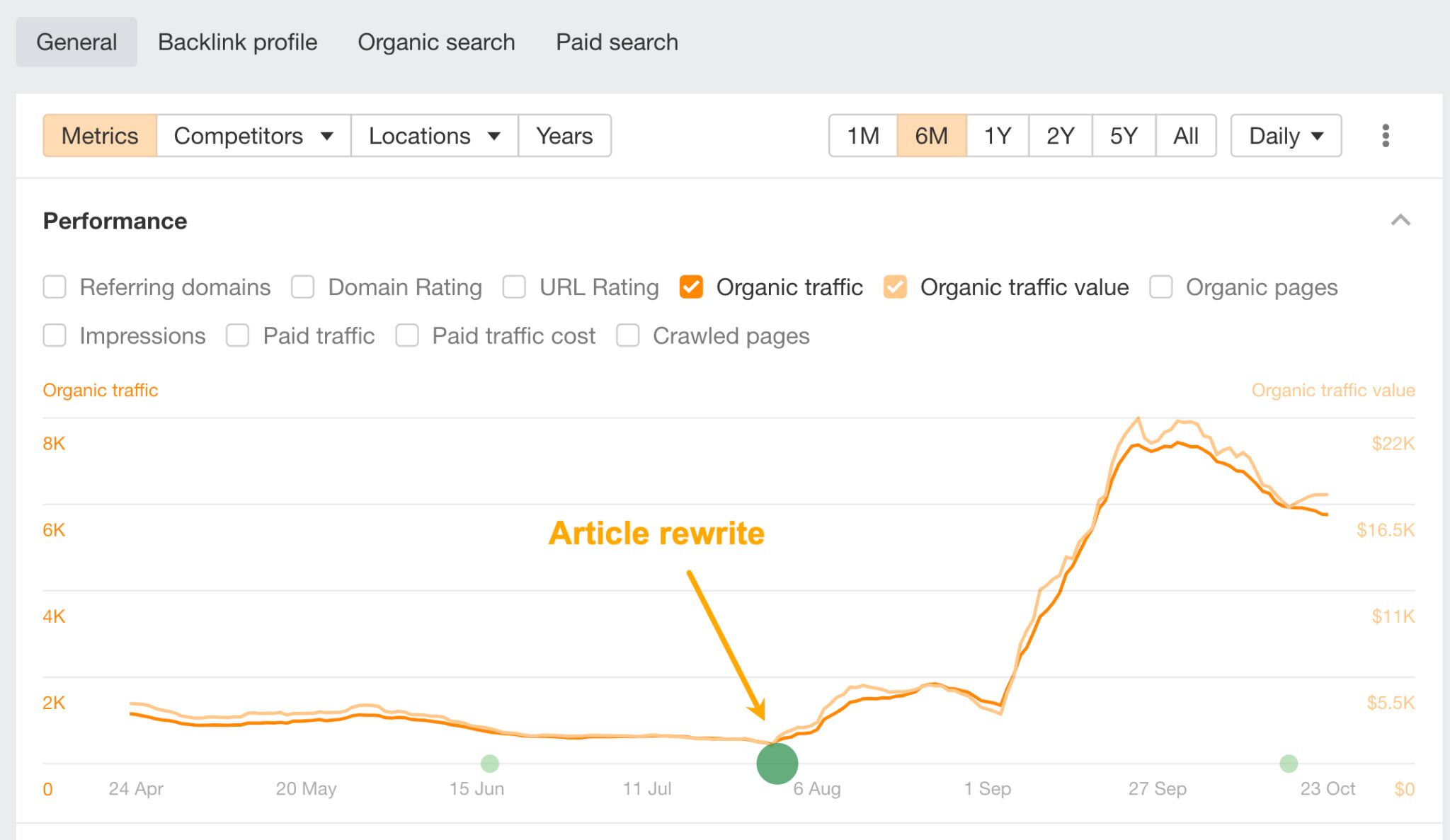
Keyword cannibalization is when multiple pages on your website rank for the same keyword and compete with each other. It is often the case that they compete because they fulfill the same intent.
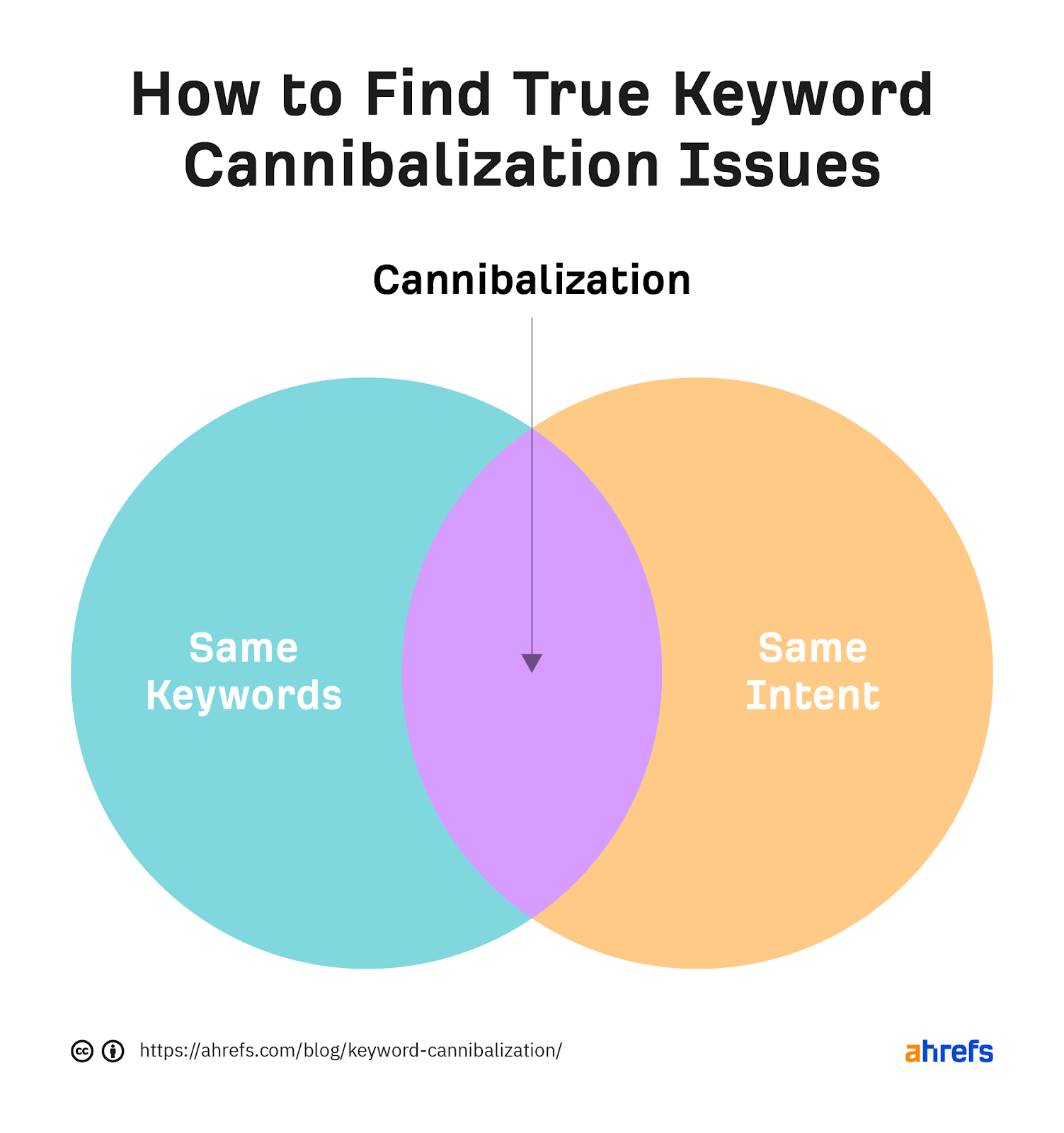
There are many cases where having multiple pages ranking is not in itself an issue.
For instance, in the case of keyword diversification, you can have multiple pages ranking for the same keyword but without competing with one another.
In this case, you have greater visibility on the SERP and can earn more traffic.
The Opportunities report will take you to a pre-filtered view of keywords you rank for with multiple URLs.

I recommend checking out each keyword to assess if the ranking pages are competing with each other or not.
If you see them constantly swapping positions, consolidating into one article may be the best move forward:
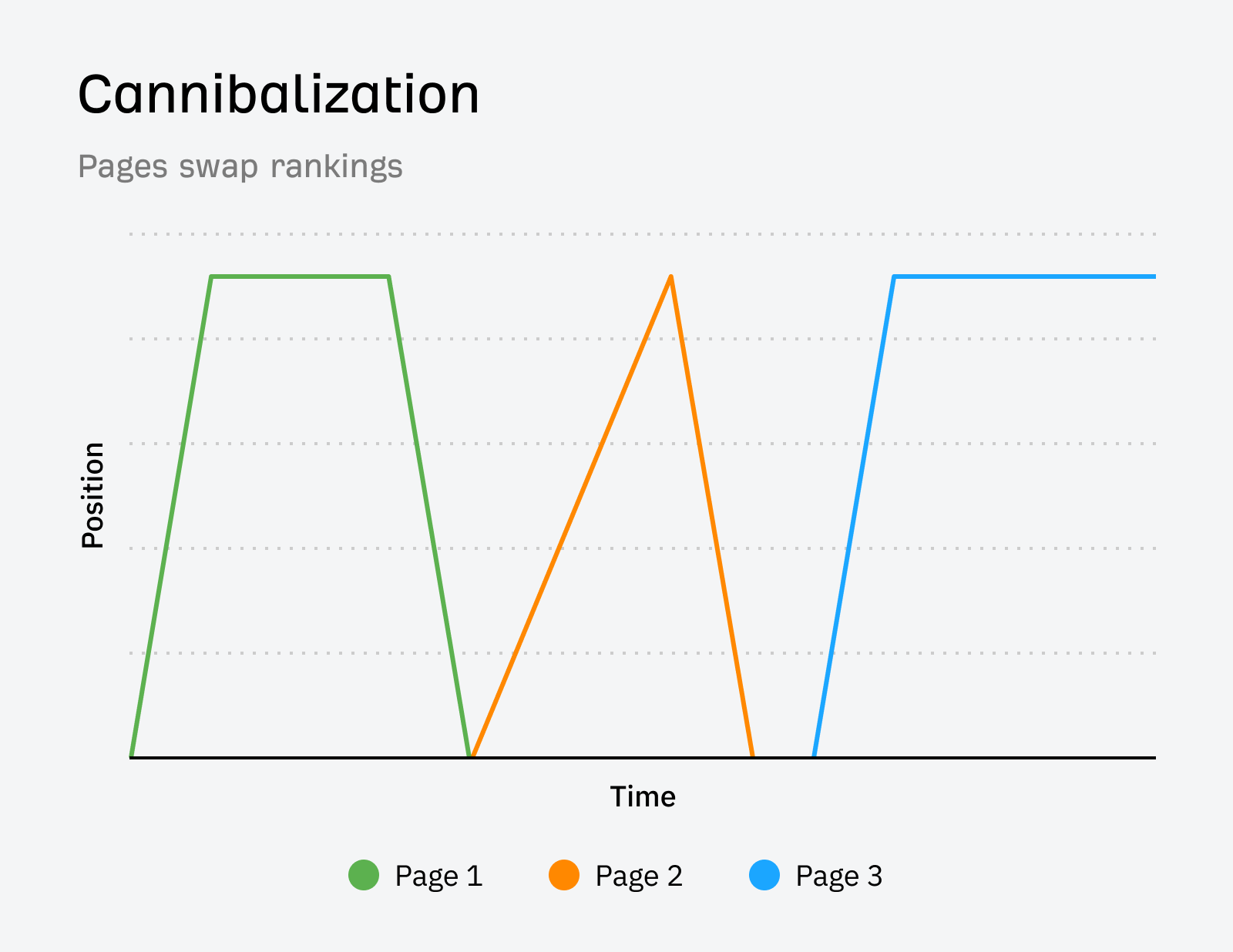
However, if you see them all ranking simultaneously for a decent amount of time, then that’s an example of keyword diversification and likely won’t need additional action from you:
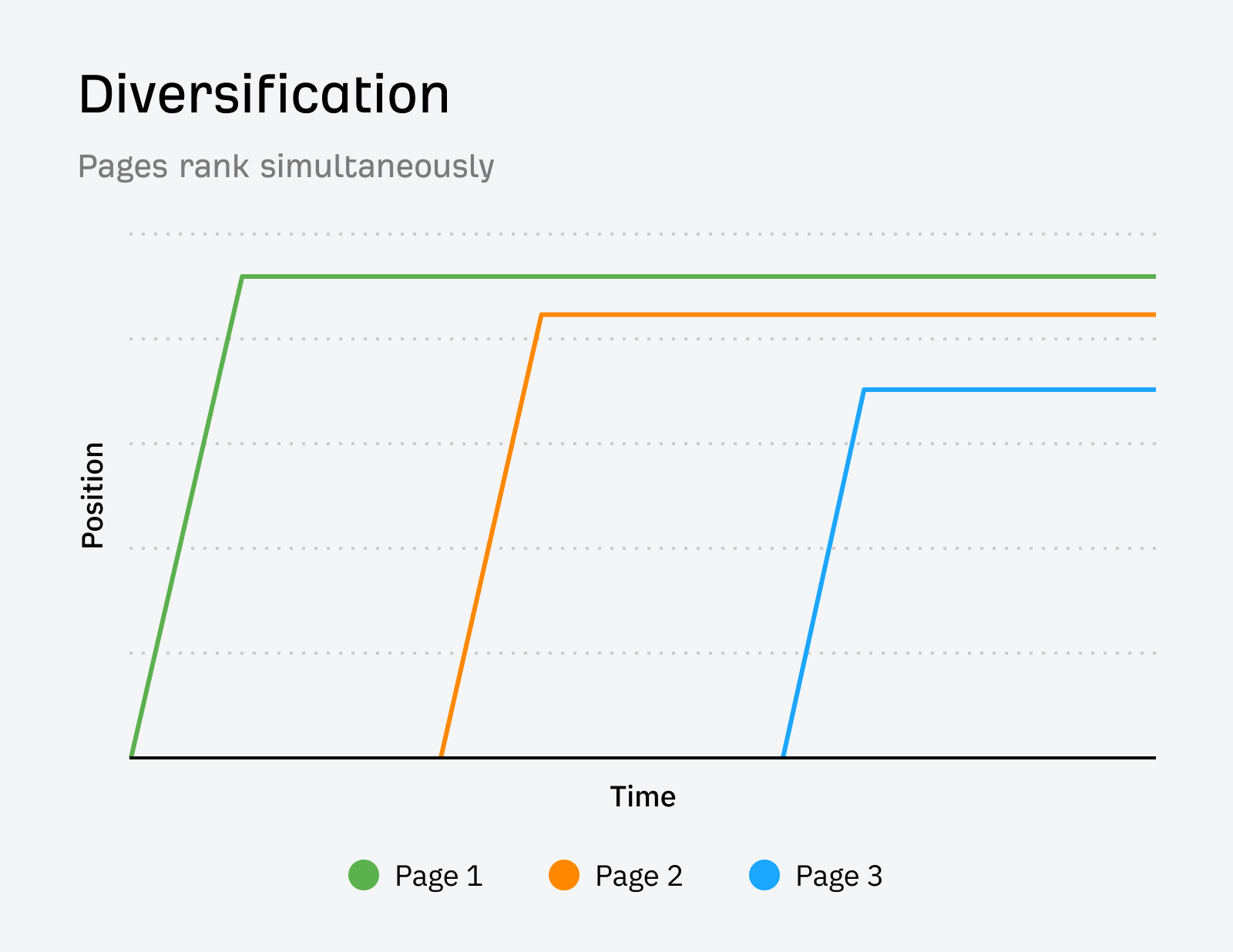
In this report you can also check out your competitor’s websites to see which keywords offer them great diversification opportunities and more SERP coverage.
Doing so could help you identify new angles or intents that your current content doesn’t cover.
In such cases, you could try creating a new piece of content targeting the same keyword but fulfilling a different intent.
For instance, if you already have a definition post, try creating a how-to guide. The content your competitors have will be a good indication as to which angles and search intents will work best for the topic.
Links going to broken pages leak authority.
An easy way to preserve that authority is to point those links to high-value pages instead. Through the Opportunities report, you can access a pre-filtered report that shows you 404 pages on your website with high-value links pointing to them:
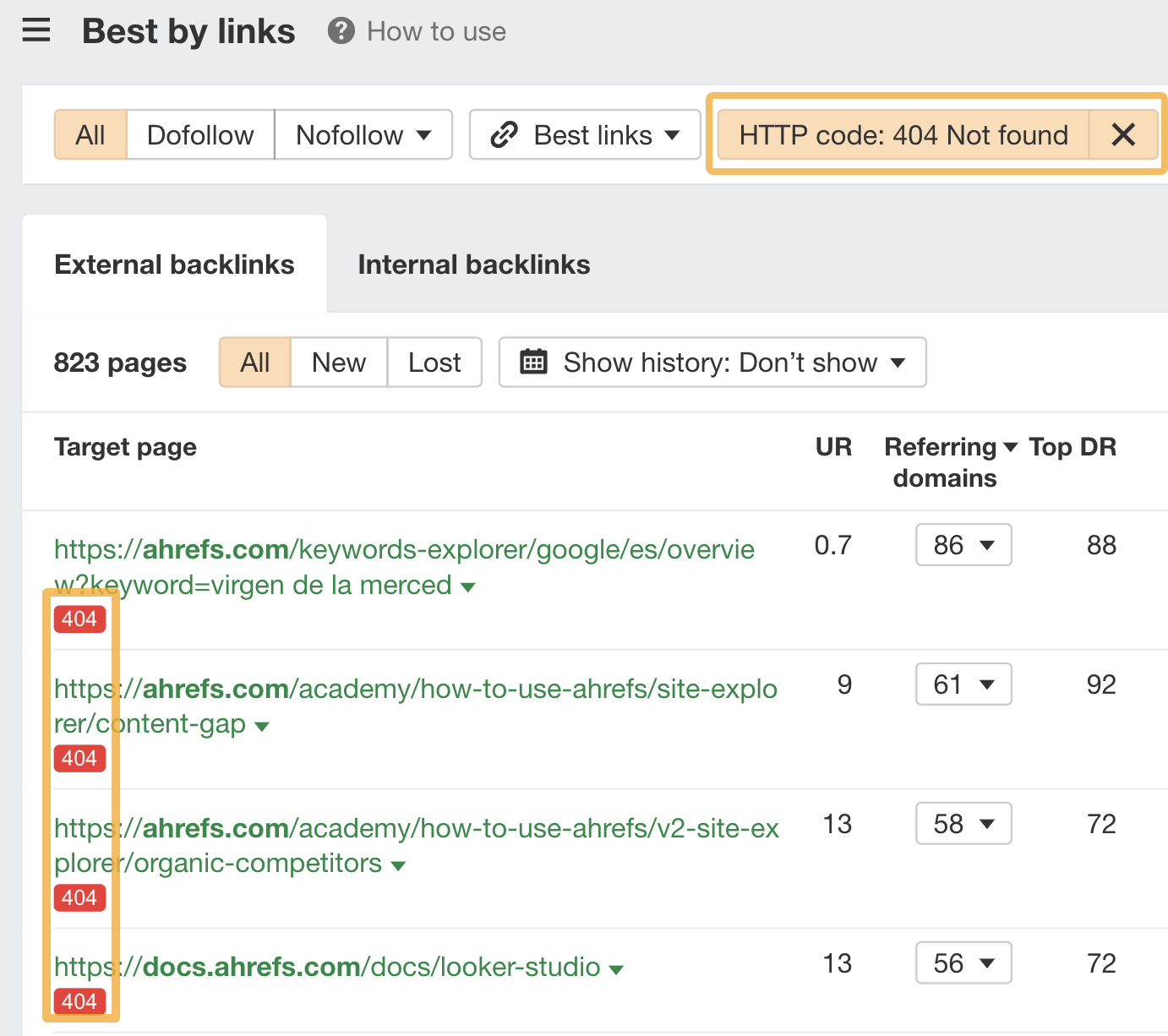
For large sites with many broken pages, this report will give you a targeted list of redirects to prioritize so that you can stop leaking authority.
Adding internal links between content on your website is one of the quickest and easiest ways to show search engines what pages you want to prioritize.
But, it can be challenging to stay on top of internal links as you add new content to your site.
For example, looking at my portfolio of content on Ahrefs, I noticed some of my latest articles didn’t have many links pointing to them. Or there were unlinked mentions of the topic in other posts.
Using the Opportunities report, I checked out the potential internal links that could be built. This is a handy view when working on a new client’s site when you want to make improvements across the whole site:

For my project, I wanted to prioritize only links to my articles, so I searched for the specific URLs I cared about:
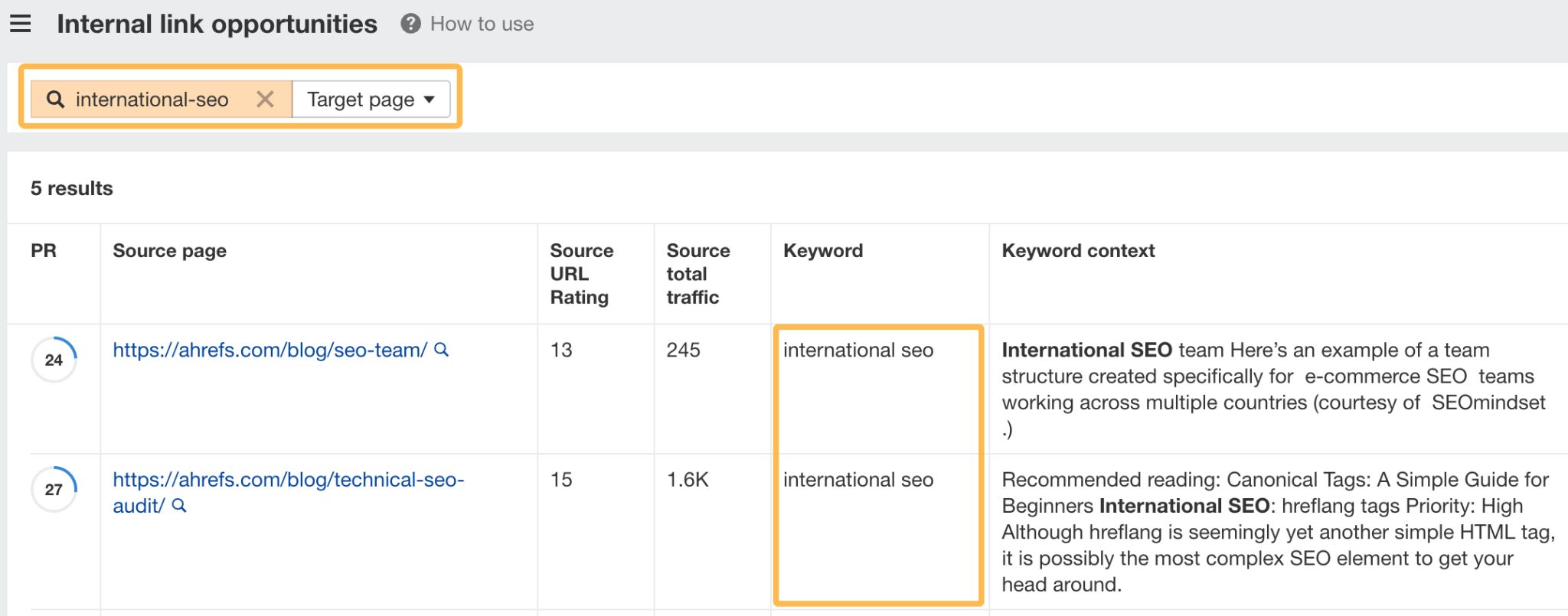
Adding the suggested internal links led to very quick wins with traffic and ranking improvements in under 7 days for some posts:
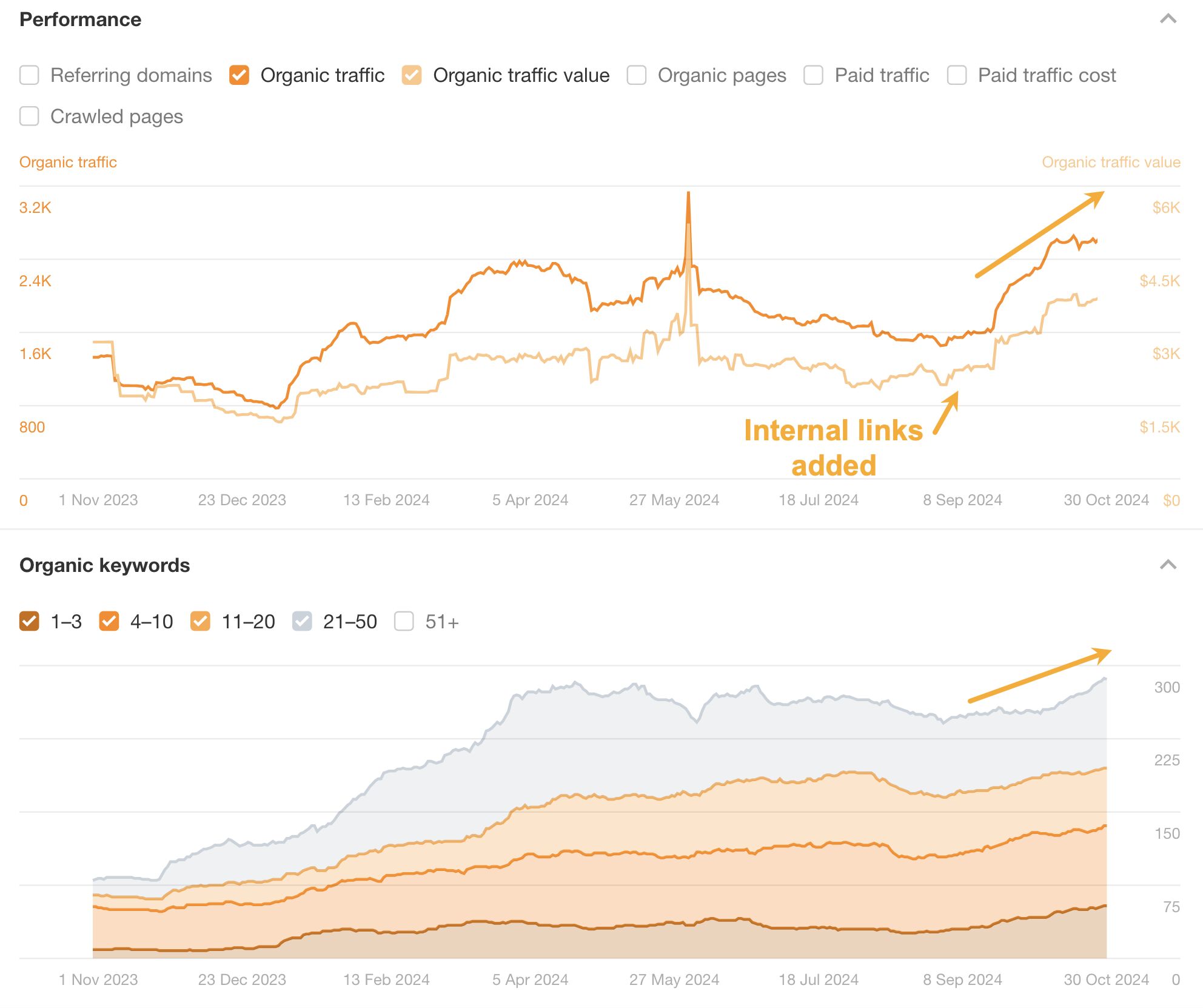
If you already have internal links on your site, you can also gain some quick wins by checking their anchor texts are optimized well.
Anchor text is the word or phrase that you make clickable when you add a link, like “click here.” For SEO, it’s best to use a mix of anchor text, including keywords, instead of only generic phrases.
From the Opportunities report, you can see a pre-filtered view of all the internal links that have generic anchor text like “learn more”, “see more” and so on:

You can get a detailed page view for each anchor:

Unless it’s a core section that’s part of your page’s UX design, you could consider modifying the anchor text to optimize it better.
Find opportunities to modify the text to include a keyword or close variation.
Just be careful you don’t overdo it. The idea is to diversify your anchor text, not to stuff keywords in there.
Closing link gaps is similar to (and just as important as) closing content gaps.
Links are often connected to how authoritative a brand is online. More high-quality links and brand mentions generally lead to more online authority and visibility.
In the Opportunities report, you can access a pre-filtered report with your top 10 competitors and all the sites they get links from that you don’t.
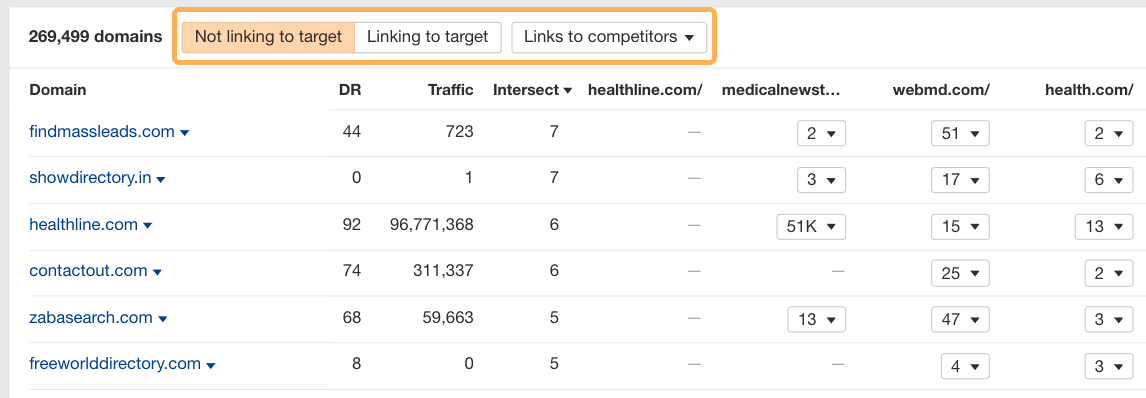
You’ll also get a birds eye view of which competitors are getting the most links:

Unlike the Content Gap report, however, there are two views you can choose from:
- Domains: You’ll get the list of domains that competitors have links from that you don’t. I recommend starting here as it’s a shorter list to work from to build a decent outreach list.
- Pages: You’ll get a list of specific pages linking to your competitors, but not you. If you want to include specific pages in your outreach messaging, like listicle posts that mention competitors but not you, this view is a better fit.
Traditional PR focuses on getting brand mentions in high-tier publications.
While these are great for general brand awareness, if there’s no link with those mentions, they’re not great for user experience or SEO. Here’s an example of an unlinked brand mention:

If a reader wants to learn more about your brand, where they would normally be able to click, now they have to interrupt their journey to run a separate Google search to find your website instead.
You also miss out on the authority that flows from the brand mentioning your website since links pass authority from one site to another. No link, no flow of online authority.
Within the Opportunities report, you can quickly find all the publications that mention your brand and don’t link to you:

It’s worth reaching out to the authors of the articles in this list to see if they’ll include a link to your site. Not all websites allow external links, but it’s still a low-effort task that can lead to some quick performance boosts.
Technical fixes are the foundation of a healthy website and good SEO. There’s always something that needs fixing.
Technology gets upgraded, integrations break, or web performance best practices change.
Luckily, the Opportunities report offers a quick and easy way for you to monitor the technical health of your website and to prioritize critical issues worth fixing.

It’ll take you to a your latest website audit, pre-filtered to show the most important errors. That way, you won’t run the risk of wasting resources on fixing anything that’s low-impact.
In this report, you’ll be able to identify issues related to pages, links, content, performance, sitemaps, and more. You’ll also get helpful advice and tips on how to fix each issue:
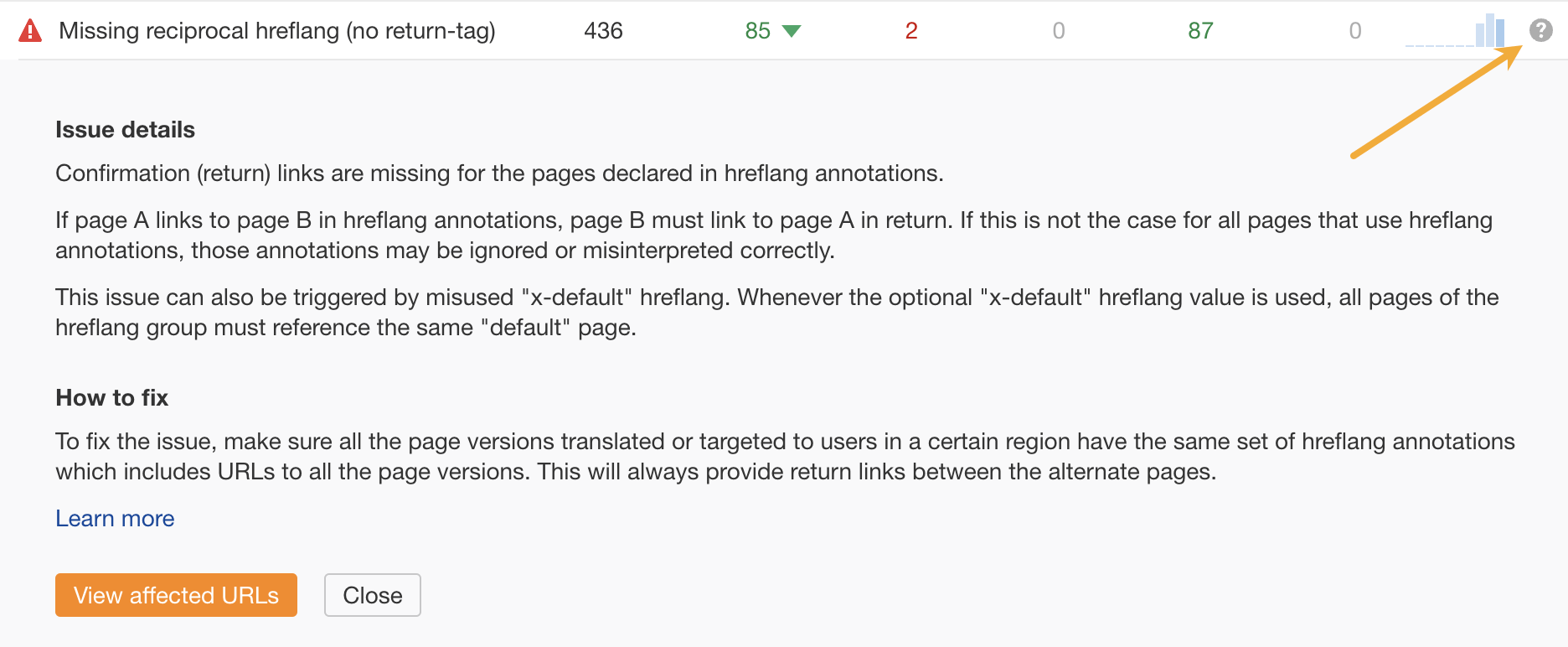
Final thoughts
There is a whole lot more you can do when optimizing a website for search engines.
But starting with these low-hanging fruit SEO opportunities will help you achieve results that will appease your clients or bosses reasonably quickly.
You can check all of these in under 30 seconds in the Ahrefs Opportunities report:
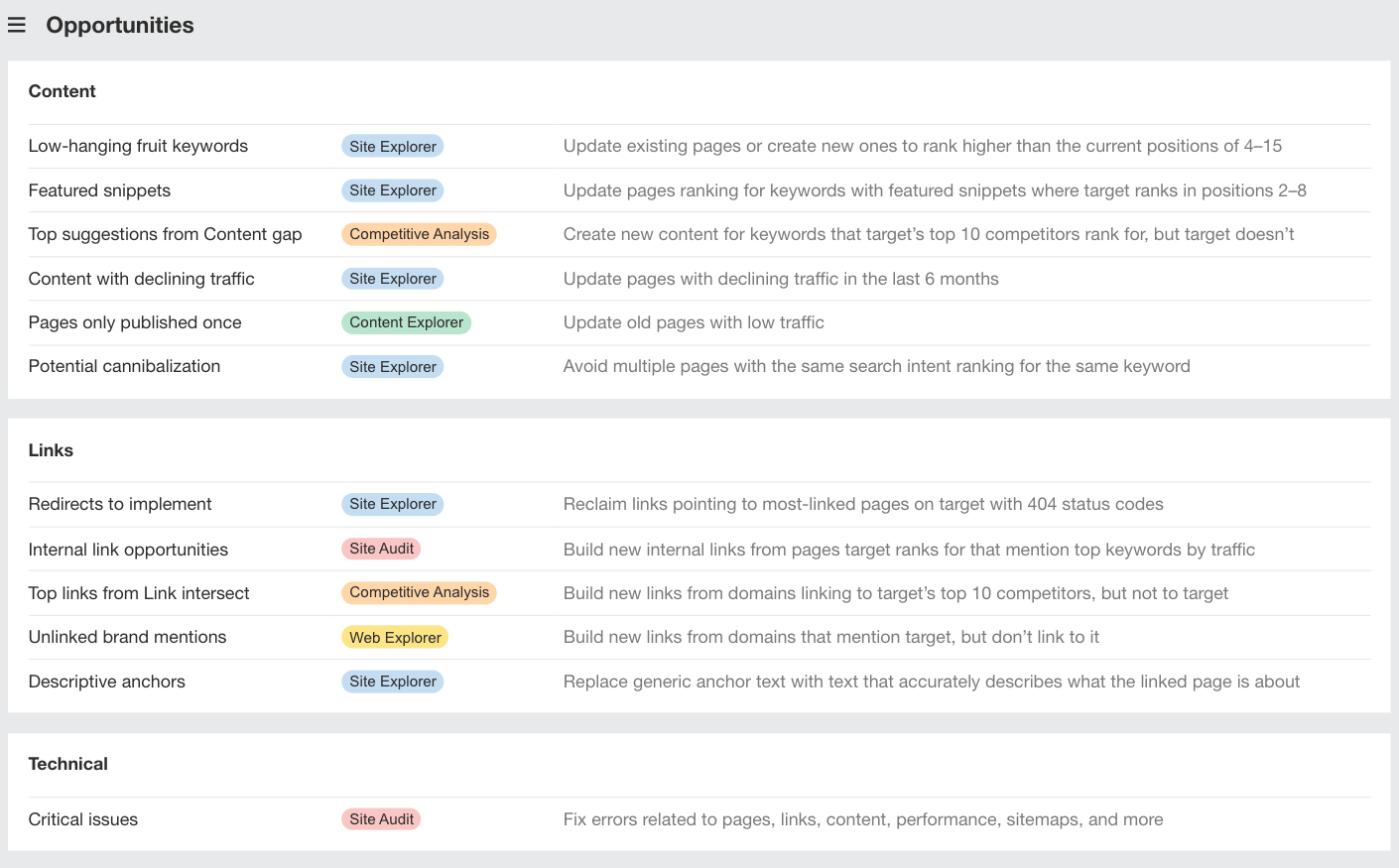
Want to see any other quick-win SEO opportunities here? Send me your suggestions on LinkedIn anytime ?



